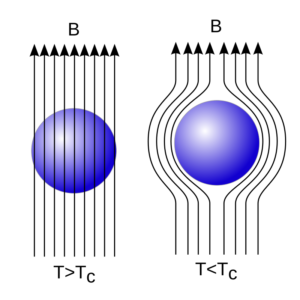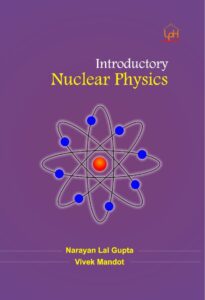Heisenberg’s uncertainty principle
- According to Heisenberg’s uncertainty principle it is impossible to determine precisely and simultaneously two canonically conjugate variables.
- If we measure one physical quantity precisely then the other will have a great uncertainty.
- This principle is observed only in microscopic particles, not in macroscopic bodies.
- If Δp = uncertainty in momentum, and Δx = uncertainty in position, then according to Heisenberg’s principle
Δx × Δp ≥ ħ / 2
- Here ħ = h / 2π and it is known as reduced Planck’s constant
- If ΔE and Δt are the uncertainties in the energy and time then the uncertainty principle will be
ΔE × Δt ≥ ħ / 2
- and if ΔJ and Δϕ are the uncertainties in the angular momentum and angular position then the uncertainty principle will be
ΔJ × Δϕ ≥ ħ / 2
- In solving the problem related to Heisenberg uncertainty principle we use
Δx × Δp ≈ ħ
Physical significance of uncertainty principle
- If the position of a particle is determined with great accuracy, Δx = 0, then Δp = ∞, the uncertainty in momentum become infinite.
- If the momentum of a particle is determined with great accuracy, Δp = 0, then Δx = ∞, the uncertainty in position become infinite.
- If a particle of mass m moves with velocity v, then uncertainty relation.
Δx × Δv ≈ ħ / m
- Since for a very heavy particle m is very large, and therefore Δx × Δv is very small.
- Therefore for very heavy particle we can measure the values of position and velocity both with accuracy.
Proof of uncertainty principle
Gamma ray microscope method (Thought experiment)

- Let electron whose position (x) and momentum (p) is to be determined is initially at P
- From diffraction theory, the limit of resolution of microscope
Δx = λ / 2 sin θ
- Δx = Distance between two points upto which they can be seen separately.
- Δx = Maximum uncertainty in position of electron
- Since the wavelength of 𝛾-ray is small, so we choose it because it decreases Δx
- Let at least one 𝛾-ray photon be scattered by the electron into the microscope so that the electron is visible.
- In this process the frequency and wavelength of the scattered photon is changed and the electron suffers a Compton recoil by gaining the momentum.
- If λ = wavelength of the scattered photon, then the momentum of the scattered photon, p = h / λ
- Since the scattered photon can be scattered in any direction from PA to PB, so the x-component of momentum will be from [(h / λ) sin (-θ)] to (h / λ) sin θ] i.e., from – [(h / λ) sin θ] to (h / λ) sin θ
- If λ՛ = wavelength of incident photon, then momentum of incident photon, p՛ = h / λ՛
- Therefore change in momentum of photon will lie between
- Thus microscope is obeying the Heisenberg’s uncertainty principle during the measurement of position and momentum of the particle simultaneously.
Diffraction of electron through a slit

- AB = A narrow slit on which electron beam is incident
- Since electron beam show wave nature so we get a Fraunhofer diffraction on the photographic plate
- The diffraction pattern obtained on the photographic plate shows that the electron beam definitely pass through the slit AB, but from which portion of the slit it can’t be said
Δy = width of slit = maximum uncertainty in the position of electron
- As the width of slit decreases, the uncertainty also decreases.
- λ = wavelength of the electron beam
- θ = angle of diffraction corresponding to first maxima (n = 1)
- From theory of Fraunhofer diffraction
a sin θ = nλ
or Δy sin θ = λ (∵ a = Δy and n = 1)
∴ Δy = λ / sin θ
- This is the uncertainty in finding the position of electron along Y-axis.
- Since the electron moves in x-direction, initially. So from de-Broglie hypothesis
its initial momentum is p = h/λ - Y- component of momentum will be from [- (h / λ) sin θ] to (h / λ) sin θ
- Thus the diffraction of electron at a single slit obeys the Heisenberg’s uncertainty principle.
To know more about Heisenberg’s uncertainty principle click here for English and for bilingual (Hindi/English) click on click here for bilingual (Hindi/English)
To know more about Gamma ray microscope method as a proof of uncertainty principle click here for English and bilingual (Hindi/English) click here for bilingual (Hindi/English)


